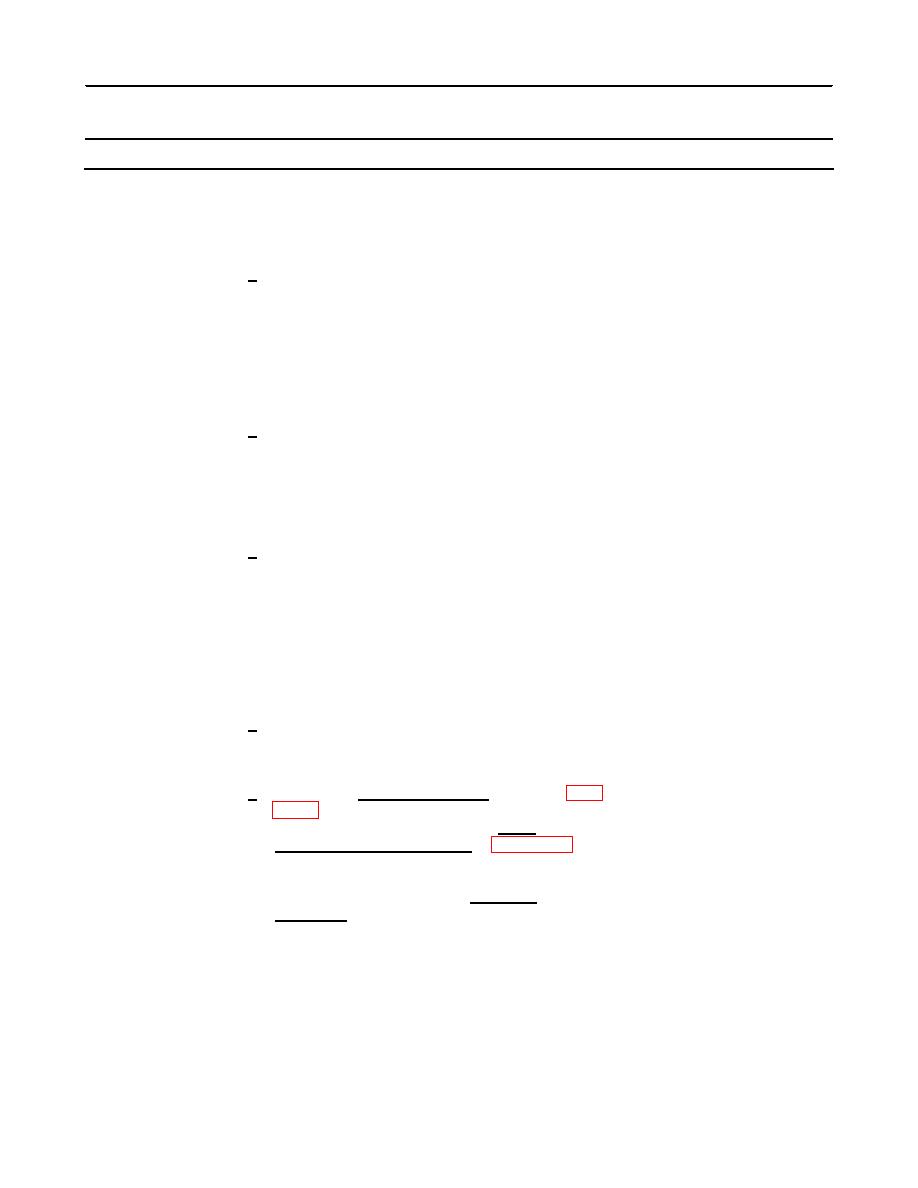
| Tweet |

Custom Search
|
|

|
||
 TM 55-1905-220-14-10
5-33. ENGINE ASSEMBLY - REMOVAL AND RUN IN - MAINTENANCE
INSTRUCTIONS (Continued).
LOCATION
ITEM
ACTION
REMARKS
ENGINE RUN-IN INSTRUCTIONS (Cont)
(b) Basic Engine Run-In
1. The operator should be observant at all times,
so that any malfunction which may develop be
detected. Since the engine has just been
reconditioned, this run-in will be a test of
the workmanship of the serviceman who per-
formed the overhaul. Minor difficulties
should be detected and corrected so that a
major problem will not develop.
2. After performing the preliminary steps, be
sure all water valves, fuel valves, etc. are
open. Also inspect the exhaust system, being
sure that it is properly connected to the
engine. Always start the engine with mini-
mum dynamometer resistance.
3. After the engine starts, if using a water
brake type dynamometer, allow sufficient
water, by means of the control loading valves,
into the dynamometer absorption unit to show
a reading of approximately 5 lb.-ft. on the
torque gage (or 10-15 HP on a horsepower
gage). This is necessary, on some units, to
lubricate the absorption unit seals and to
protect them from damage.
4. Set the engine throttle at idle speed, check
the lubricating oil pressure and check all
connections to be sure there are no leaks.
5. Refer to the Engine Test Report sample on page
for the test and run-in, and to the Basic
Run-In Horsepower Schedule on page 5-527 which
indicates the speed (rpm), length of time and
the brake horsepower required for each phase
of the test. Also, refer to the Operating
Conditions in Chapter 3 which presents the
engine operating characteristics. These
characteristics will be a guide for tracing
faulty operation or lack of power.
5-533
|
||
 |
||